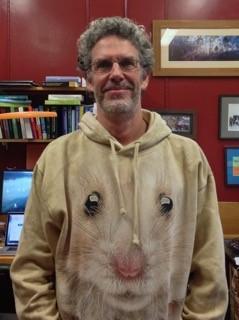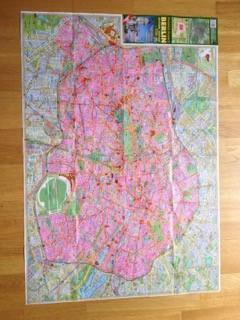Foaming, roaming: the life of a biologist
- Heather Dugmore
Michael Jennions, Biologist, BSc 1990, BSc Hons 1992, MSc 1993. Location: Australia
Michael Jennions is a professor at the Research School of Biology and leader of the Jennions Group in Behavioural and Reproductive Ecology at the Australian National University (ANU) in Canberra. His story of world research and travel begins with a frog condom he designed during his Master’s at Wits.

He explains the condom was used on male foam-nest frogs during research in Mkhuze Game Reserve in northern KwaZulu-Natal. “I look back in wonder that we were working at night in an area full of rhino, armed only with torches and enthusiasm.”
The male foam-nest frogs appeared to be cooperating in the frenzied building of the foam nests, whereas evolutionary theory suggests that unrelated males generally don’t cooperate; they compete to get access to the female. Michael wanted to find out if the foam-nest frog was a rare, sexually cooperative male. So he fashioned a condom from a plastic sandwich bag and slipped it between the female and the male jockeying her to stop him from shedding sperm and fertilising her eggs. Yet the eggs still got fertilised.
“What we discovered is that every time the female releases eggs she churns her legs to whip up the foam. At this exact moment, all the males in the vicinity swivel their bodies to move their groins closer to the female’s cloaca, whipping up more foam in the jostle. And so, while the jockeying male is in ‘pole position’, the others are right there, opportunistically increasing their chances of fertilising the eggs as they are released. Their foam-whipping simply creates the illusion that they are helping.”
Since then, Michael’s research and presentations on the reproduction and sexual selection behaviour of frogs, crabs, fish, insects and mammals have taken him all over the world, including Mozambique, Tanzania, Japan, Australia, Panama, the UK, Spain, New Zealand and China.
Deservedly so, as he is an exceptional scholar. He was the recipient of the Wits Chancellor’s Medal for the most distinguished graduate across all faculties in 1990 and was then selected as a Rhodes Scholar to Oxford University, where he did his doctorate from 1992 to 1996 on “Signalling and Sexual Selection in Animals and Plants”. The man should have his own TV show; we could all learn from him. It certainly worked for him as he and Pat Backwell (BSc 1983, BSc Hons 1984, PhD 1991), an equally illustrious scientist (they met at Wits), married in 1996. She, too, is a professor at ANU, and leader of the Backwell Group in the Behavioural Ecology of Fiddler Crabs.
She and Michael work in the same research area and in the first year of their marriage fiddlers and cichlids took them to the Smithsonian Tropical Research Station in the forests of Panama until 2001. Michael elaborates: “We lived in a small settlement here called Gamboa, halfway between the Pacific and Caribbean, with a rainforest on our back doorstep, full of wildlife – sloths, toucans, tamarin monkeys, howler monkeys, opossums, capybaras … it was amazing.”
He adds that they were “pretty broke” when they got there and lived on a very tight budget, eating a basic local diet, mainly beans, rice and plantains, and living in a dilapidated “weird old colonial-style plantation house on stilts with a massive hole in the floor in the bathroom. You had to remember it was there or you risked falling through it in the middle of the night.”
Okinawa in Japan was next on their research travels. “We were in the far north in a village called Motobu. Okinawa is famous for its sweet pork, made into a broth with noodles, and we ate lots of this. The people live to be very old here; many are over 100. Possibly it’s the sweet pork or their ice cream made of red beans, which is really good.”
In 2001 they moved to Canberra. The trusty fiddlers have afforded them several outings from there, including trips to Mozambique and Zanzibar.
They also spent a year in Berlin, where Michael got a fellowship to the Institute for Advanced Study at Wissenschaftskolleg in Berlin. “While there, between writing papers, I decided to do a crazy project: to walk all the streets in Berlin inside the Ringbahn – the 37.5km long railway line around the city – and to map my walk.

“It took me about nine months and I covered 2000km because I zigzagged back and forth. I would colour in the section I had walked each day on the map with a pink fluorescent pen. It appealed to me as quite a systematic person, and it was like a bit of performance art. I got to know the city and it was really fun.”
Michael describes Canberra as “an easy place to live in. It’s peaceful and pristine, with embassies and film festivals. Because most of the people are middle class it doesn’t have the vibrancy of Berlin or Johannesburg. If everyday living is consistently easy you lose track of time and the years pass.”
Michael and Pat enjoy the odd sortie to the local Polish club, The White Eagle. “They do delicious Polish dumplings or pierogi, and the décor is all orange and brown and 70s or vaguely East European and comfortably tasteless. I like this because so much of Australia is so super cool and hipster,” says Michael.
Come vacation time, they head for South Africa or Europe. “I miss the wildlife, natural beauty and the people and diversity of South Africa. I am pleased to see that my South African colleagues are also doing well. Would I come back? Of course, but that’s just nostalgia talking, it’s not on the cards.” Unless, of course, the local fiddlers irresistibly wave and call!


